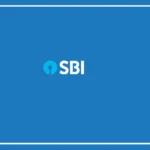The Mahila Samman Savings Certificate 2023 is a scheme initiated by the Government of India, designed specifically for women investors.
The government’s goal with this scheme is to encourage women investors to develop a savings habit.
The Mahila Samman Savings Certificate allows depositing money collectively for two years, from April 2023 to March 2025.
It commenced on April 1, 2023, and operates through post offices.
Mahila Samman Certificate
On June 27, 2023, the Department of Economic Affairs, Ministry of Finance issued an e-gazette notification registering all public sector banks and selected private banks to administer the Mahila Samman Savings Certificate 2023.
Besides India Post, only a handful of banks provide the Mahila Samman Savings Certificate.
These banks include Bank of Baroda, Canara Bank, Bank of India, PNB, and Union Bank of India.
Minimum and maximum limit for depositing money
The minimum and maximum limits for depositing money in this scheme are Rs 1000 and Rs 2,00,000, respectively. Deposits must be made in one go into the account.
Additionally, there needs to be a 3-month gap between opening two accounts under this scheme for the same customer.
Interest rates
The interest rate for this scheme is 7.5% per annum.
Interest is credited quarterly to the account and paid upon maturity.
List of Banks
Bank Of Baroda
Bank of Baroda has introduced the Mahila Samman Savings Certificate (MSSC) scheme, a new government initiative aimed at women.
Canara Bank
Canara Bank has rolled out the Mahila Samman Savings Certificate 2023 Scheme nationwide.
Bank of India
Bank of India is the first Public Sector Bank to launch the Mahila Samman Savings Certificate 2023.
Punjab National Bank
PNB, a public sector bank, offers the Mahila Samman Certificate to investors, as stated on its website.
Union Bank of India
Union Bank of India officially launched the Mahila Samman Savings Certificate (MSSC) 2023 Scheme on June 30, 2023,
across its branches in India.
Early Withdrawal Norms
You can withdraw early under below circumstances:
- Upon the death of the account holder.
- For medical expenses related to life-threatening illness of the account holder.
- In case of the guardian’s death, leading to difficulties in managing the account.

























